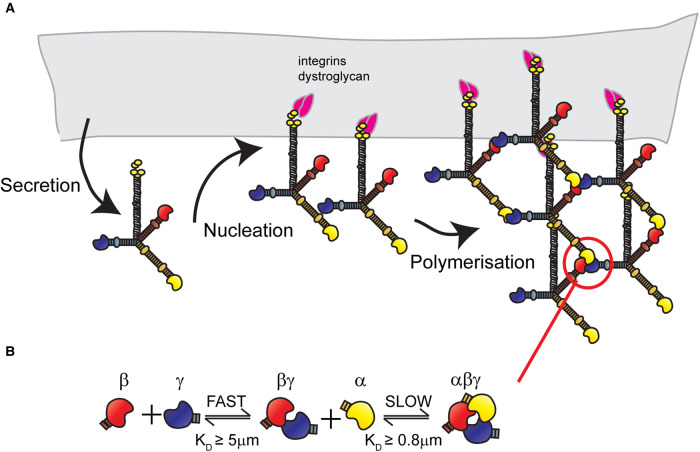Figure 2. Laminin network assembly.
(A) Network assembly involves, first, secretion of the fully trimerised laminin protein. Then, in the ‘nucleation' step, the proteins bind to cell surfaces receptors including integrins α3β1, α6β1 and α6β4 or dystroglycans. Once sufficient local concentration is achieved through receptor clustering, the ‘polymerisation' step occurs via interaction between laminin N-terminal domains. (B) Laminin ternary node formation is a two-step process involving a rapid formation of relatively unstable βγ dimers, followed by slower interaction with an α laminin N-terminal domain to form a more stable αβγ ternary node.

